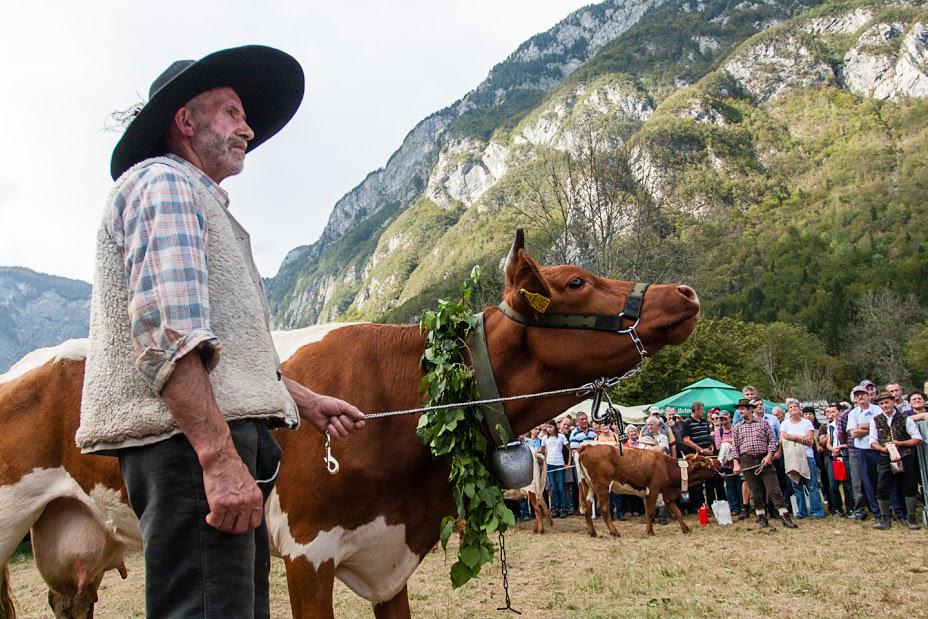
With its glacial lake and romantic villages, the Bohinj Valley is one of the most popular tourist destinations in Slovenia. High above the lake, however, lies another gem: several scattered settlements known as planšarije. For years, dairy cows in this area helped local herders to make a living and shaped the lifestyle of the Slovenian Alps.
The area’s herding tradition probably began in the 13th century. Herders, called planšarji in Slovenian, headed into the mountains with their cattle when the weather got warm – often in June -- and stayed there until the arrival of the first autumn chill.
Because fresh milk quickly spoiled before the advent of refrigeration, the Bohinj herders made cheese, butter, and other dairy products in their high-mountain settlements. Over the years, a variety known as Mohant, with an intense flavor and a distinctive smell, became especially famous. The herders typically made only enough dairy products for their own needs, but in 1873, they formed a cooperative that allowed them to sell their cheese more widely. They adopted Swiss cheese-making techniques to ensure their product remained of a consistent quality.
The traditional life of Bohinj herders survived well into the 20th century. But ultimately, modernization took its toll. Large-scale dairy production made traditional high-mountain grazing uncompetitive. The Communist regime attempted to organize the herders into larger co-ops, but the results were underwhelming.
But just as it seemed that the centuries-old tradition was in danger of dying out, new opportunities appeared. In a newly health-conscious age, consumers began to reject processed foods in favor of traditional recipes, and the handmade Bohinj cheeses suddenly became in high demand.
The growth of tourism also encouraged people to visit Bohinj’s pastures. One of the settlements built by the herders, Zajamniki on the Pokljuka plateau, draws people from around the world who come to admire its traditional wooden architecture and taste homemade dairy products. And a museum of cow herding in the village of Stara Fužina gives visitors a chance to learn about the history and lifestyle of the herders’ settlements.
Today, several herders continue the tradition that had been passed down from their ancestors. The famous Mohant cheese has been recognized by the European Union as a product with a designated origin. And every September, the local community organizes a Cow’s Ball, a celebration of food, music, drink – and, most importantly, the traditions that have shaped this part of Slovenia for centuries.

































































